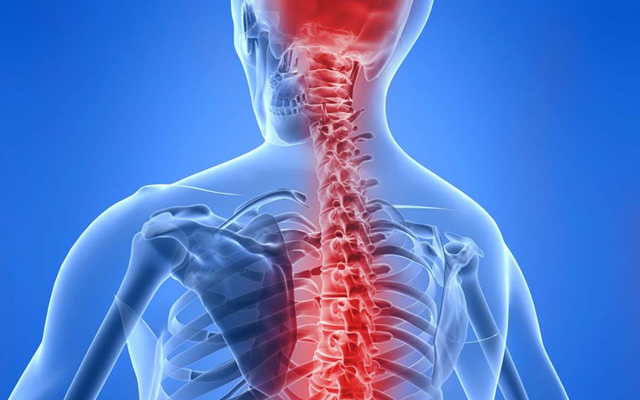Our body is a complex organism that works with the cooperation of different systems, including circulatory system, digestive system, endocrine system, immune system, lymphatic system, muscular system, reproductive system, respiratory system, urinary system, skeletal system and nervous system, among which there include central nervous system that helps all the parts of the body to communicate with each other. Keep reading to learn more about the structure and functions of your central nervous system.
Structure of Central Nervous System

The nervous system has two parts – the peripheral nervous system and the central nervous system. Your central nervous system consists of the brain, spinal cord and a highly complex network of neurons. The system works seamlessly to send, receive and interpret information from different parts of your body. Here's a bit more about the structure of central nervous system.
1. Brain
Your brain is like the control center of your body. It has different components that play different roles. For instance:
|
Components |
Description |
|
Forebrain |
The forebrain receives and processes sensory information. It also handles other functions, including perceiving, thinking and understanding language and controlling motor function. It has different structures too, including the hypothalamus and the thalamus, both of which manage different functions such as sensory information relay, motor control and autonomic functions control. The cerebrum, which is the largest part of your brain, is also in forebrain. |
|
Midbrain |
The hindbrain and midbrain make the brainstem. Midbrain is basically the portion that forms a connection between the forebrain and the hindbrain. The region manages your visual and auditory responses, as well as motor function. |
|
Hindbrain |
Extending from the spinal cord, the hindbrain contains structures such as the cerebellum and pons. These regions are responsible for maintaining equilibrium and balance. They also play a role in the conduction of sensory information. This region also contains the medulla oblongata that controls autonomic functions such as heart rate, breathing and digestion. |
HERE is the detailed information about brain structures and functions.
2. Spinal Cord
Connected to the brain, spinal cord is a cylindrical shaped group of nerve fibers and runs down your spinal column that extends from your neck and goes all the way down to your lower back. These nerves help form a connection between the brain and other areas of your body. These nerves move into two pathways: There are ascending nerve tracts that send out information from the body to the brain, and there are descending nerve tracts that send signals from the brain to the rest of your body.
3. Neurons
Your nervous system has cells comprised of neurons that contain nerve processes. The nerve processes has axons and dendrites that can transmit and conduct signals. Axons are long nerve processes and carry signals away from the cell body, whereas dendrites are shorter than axons and carry signals toward the cell body. By making use of nerve impulses, these nerves transmit signals to the brain, spinal cord and other areas in your body. Neurons include different types like sensory, motor or interneurons. Sensory neurons take information from internal organs and send it your central nervous system, whereas motor neurons take information from your nervous system to your glands, organs and muscles. Interneurons transmit signals between sensory and motor neurons.
Here's an interesting and vivid video to help you learn more about specific structures of central nervous system and neurons.
Fun Things You May Not Know About Central Nervous System
Many people don't know much about their central nervous system. Here is some interesting information that will help you understand how amazing your central nervous system is.
- The average length of your spinal cord is about 19 inches and it contains about 13,500,000 neurons. The communication between the brain and other parts of the body is carried out through the spinal cord.
- The average weight of an adult male brain is 1375 g, but it is lighter for women and weighs around 1275 g only.
- The nervous system can transmit nerve impulses as fast as 100 meters per second, and in some cases, the speed of transmission is around 180 miles per hour.
- A newborn's brain grows three times within the first year after birth. Your brain loses a gram every year, as you grow old.
- A man's brain has 6.5 times more gray matter as compared to women, but a woman's brain has 10 times more white matter as compared to men.
- Your nervous system cannot function properly in the absence of potassium and sodium ions. Vitamin B is equally essential for your nervous system.
- It will make a line as long as 600 miles if you line up all the neurons in your body.
- No more than 4% of your brain cells are used for most of the tasks.
- The human brain makes use of 100 billion neurons to receive information from the nervous system, interpret it and send signals to different areas of your body.
- The left side of your brain controls the right side of your body and the right side of your brain controls the left side of your body.
- Neurons grow at the rate of 250,000 neurons a minute in a child inside the womb.
- Sensory neurons change touch, light and sound into neural signals and send it to your central nervous system to help you react to your surroundings.
- The nerves you have located right at the base of the spinal cord are the most sensitive ones.
- You have 43 different pairs of nerves that connect your central nervous system to the rest of your body. 12 of these nerve pairs connect to the brain, while the remaining ones connect with the spinal cord.
- Nerves can be damaged by injury or disease and result in severe pain and loss of function in certain parts of your body.
